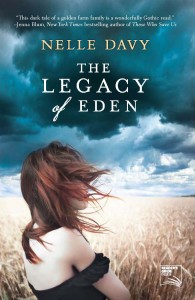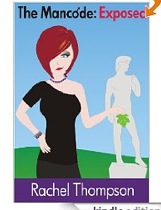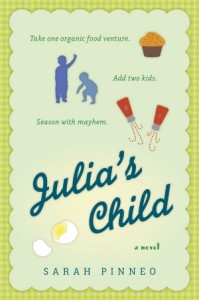Writing on Taboo Topics
Today, I have a guest post from Nelle Davy, author of The Legacy of Eden. Here, Nelle talks about writing on taboo topics.
Writing on Taboo Topics
Because the novel (The Legacy of Eden) was inspired by I Claudius, in which all these things occur it wasn’t difficult to write because it was the natural course for the story to take. The hardest scene to write was the rape scene and the end confrontation between Meredith and Ava. Everything else was a walk in the park compared to that which was very draining. I think it would be interesting to know that the bloodletting which actually is now a pivotal moment in the novel did not come in until the final draft. Everything that happens in the novel is in context with the characters, their build up, and their downfall, so writing them felt very natural and as I said because the book was a modern reworking of another, it already had a sort of natural path that it was going to take with these things along the way, so I was always prepared for what was going to happen within the novel and the journey it was going to take. What interested me as a writer was not the incidents themselves but the characters reactions to them. That was what kept me gripped when writing it – how the characters behaved and why and what was draining or difficult was trying to understand that and conveying it in such a way that the reader could to while also drawing their own conclusions. After all, books are symbiotic – the writer sets down the story but really it does not come into its own until someone reads it and puts their own interpretation onto it. That’s what gives stories life.
Interview with Nelle Davy, Author Of Legacy of Eden
 Not long ago, I reviewed Nelle Davy’s The Legacy of Eden. Nelle was gracious enough to answer a few questions for me, and here they are for you. And come back Wednesday, when I’ll have a guest post (my first ever) from Nelle.
Not long ago, I reviewed Nelle Davy’s The Legacy of Eden. Nelle was gracious enough to answer a few questions for me, and here they are for you. And come back Wednesday, when I’ll have a guest post (my first ever) from Nelle.
What inspired you to write THE LEGACY OF EDEN?
I Claudius – I wanted to take the kernel of the idea from the novel (ambition and its devastating effects on a family headed by an amoral matriarch) and move it into a modern setting.
Where do you do most of your writing?
Because I wrote the novel on lunch breaks, at work and on weekends I can write anywhere – I had to learn to be really flexible and un-precious about my working environment because I was juggling writing with a full time job.
How did you come up with the character of Lavinia?
She wasn’t meant to be as large a character as she was. She was taken from the Livia model in Robert Graves’ novel, but the fact that she was abandoned as a child, that her name for years was Anne-Marie Parks and she was previously married to a man who was thirty years her senior were all things that came when I started writing. She became a law unto herself but I needed to explain why she was the way she was, without justifying her.
Why did you choose Iowa for the location Aurelia?
I wanted to set it on a farm and it was either Ireland or America for the location when I was researching. Because I envisaged Aurelia as being a miniature kingdom as well as a microcosm in its own right I chose America because it was a place that was vast enough to make it possible for somewhere like Aurelia to exist. Iowa is the part of the American heartland and is firm farm country and when I found out there actually was a city called Aurelia there, it seemed like divine providence.
How much, and what kinds of, research went into creating this novel?
A lot. It was so boring researching farm techniques – I am from London, I actively find the countryside an anathema most of the time but I chose to write about something that was nothing to do with my current life and so I had to make sure what I wrote was authentic. I also had to read a lot of American literature just to ensure I got the American voice right. English people and Americans do not speak the same language in many ways contrary to what we believe. For example, in England I would say, I strolled along the pavement to the car with my shopping bag and dumped it in the boot.
In America it would be, I walked down the sidewalk to the car with my carrier bag and dumped it in the trunk.
See what I mean?
This Charming Life: What If I Said Yes?
Recently, three different people, in three very different contexts, have asked me if I am a writer. And even though each of these questions has been asked via email, each time I’ve smiled slightly and said, “Oh, no. I’m a reader. The only thing I write is this little blog.”
Then, I thought about it. What if I started saying, “Yes. I am a writer.”? How might that change things? In this year of discovery, I feel this question can’t be ignored. I’m not sure I want to write a book. But with all the writing classes I have taken, and with the writing I do on this blog, somewhere inside of me a writer exists.
What’s the worst thing that can happen by saying, “Yes, I’m a writer.”? I suppose someone may be compelled to disagree. Someone might tell me I’m awful and should never put pen to paper or fingers to keyboard again. Who cares about that? I’m doing this for me.
In this A Year To Live course, we’ve been talking about old dreams. Letting go of the ones that no longer matter, and exploring what we think we think our lives will be if we hold on to others. I had a really hard time with this because I equated letting go with giving up. I had a sudden epiphany that the two are not synonyms. I don’t want to give up on three of the goals I listed. But I realized I need to let go of allowing these goals define what I think a perfect life would be and trust that where I am is exactly where I am supposed to be.
That’s what made me ask myself what would be so wrong with saying I’m a writer. I may not be published, I may not make my living from it, but what opportunities might I find now that I’m opening myself up to this whole new world?
So, now I’m saying it. I’m a voracious reader. I’m an explorer. And, I’m a writer.
The Mancode: Exposed
 The bad redhead in a sea of Orange County blondes, Rachel Thompson (RachelInTheOC) is back with her trademark humor and snark in The Mancode: Exposed. This time, she’s deconstructing the differences between men and women.
The bad redhead in a sea of Orange County blondes, Rachel Thompson (RachelInTheOC) is back with her trademark humor and snark in The Mancode: Exposed. This time, she’s deconstructing the differences between men and women.
We all have things that bug us about the opposite sex. Thompson’s deconstruction of the behavior of men in her life (whether her husband, or strangers observed at Disneyland) is humorous, not cruel. And most of us have similar observations about the men in our lives. Thompson doesn’t portray things as men=dumb, women=superior. Instead, its a comedic exploration and acceptance of our differences.
Chock full of the humor, Prada, chocolate, and martinis we’ve come to love from Rachel, The Mancode: Exposed fans will not be disappointed.
If you’re on Twitter, you can follow Rachel here and check out all her musings here. So, pour your martini and settle in for some snark and insight. Happy Reading.
Julia’s Child
 Julia’s Child, a great little novel about a woman trying to succeed in the organic children’s food business, is on tour this month. From the publisher, “Julia Bailey is a mompreneur with too many principles and too little time. Her fledgling company, Julia’s Child, makes organic toddler meals with names like Gentle Lentil and Give Peas a Chance. But before she can realize her dream of seeing them on the shelves of Whole Foods, she will have to make peace between her professional aspirations and her toughest food critics: the two little boys waiting at home. Is it possible to save the world while turning a profit?
Julia’s Child, a great little novel about a woman trying to succeed in the organic children’s food business, is on tour this month. From the publisher, “Julia Bailey is a mompreneur with too many principles and too little time. Her fledgling company, Julia’s Child, makes organic toddler meals with names like Gentle Lentil and Give Peas a Chance. But before she can realize her dream of seeing them on the shelves of Whole Foods, she will have to make peace between her professional aspirations and her toughest food critics: the two little boys waiting at home. Is it possible to save the world while turning a profit?
Julia’s Child is a warmhearted, laugh-out-loud story about motherhood’s choices: organic vs. local, paper vs. plastic, staying at home vs. risking it all.”
As much as I enjoyed the story, and I do recommend the book for anyone- mom or not- seeking balance and trying to be more conscious of what we put in our bodies, I was equally intrigued by the real life story of the author, Sarah Pinneo. She left a high powered job on Wall Street and in addition to making her own delectable organic goodies and writing books, Sarah also writes about food and sustainability for several lifestyle publications.
 Sarah was gracious enough to answer a few questions for me, and provide a recipe to share with all of you.
Sarah was gracious enough to answer a few questions for me, and provide a recipe to share with all of you.
What was the hardest thing about making the jump from Wall Street to pursuing writing?
I always knew I wanted to do it. Every year I would have to fill out these very corporate self evaluation forms, and I would stumble on one particular question. Where do you see yourself in five years?
I would give the savvy answer—I would claim that advancing up the corporate ladder was my goal. But even though I often loved my Wall Street job, I’d always been more interested in writing and publishing. I did an internship at Random House during college, and I edited a college guide for St. Martin’s Press. To me, it was the Wall Street job that always seemed like an accident.
But the timing was tricky. Working on Wall Street was very helpful to my family’s financial stability, and I’ll truly never know whether I made the leap at the right time. But it felt right to me.
What advice would you give to someone contemplating a big career change like you made?
If you can, leave on a high note. My career was going well when I left, and that helped to give me the confidence to make the jump. A couple of years earlier, things had not been going well. I considered throwing in the towel and leaving. But I’m glad I stuck it out a little longer. If you’re going to do something risky, it helps to feel that the choice was entirely your own.
Are you as strict with what your kids eat as Julia is in the book?
I’m glad you asked this question, because usually people assume that I must be neurotic. The answer is: no and yes. I cook very healthy organic food at home, because when you’ve done as much research as I have into the food system, it changes you. I only buy grass fed beef, for example. And most of our vegetables are organic, etc. But I have never performed a secret switch of my kids’ Halloween candy, like Julia does.
Outside of our home, my kids eat everything. There are ski mountain hot dogs of dubious origin and birthday party treats full of red dye #40, and I do my level best to go with the flow. I never want to give my kids the impression that our choices are somehow superior to what other families do. Every mother employs her own expertise wherever it lies.
What inspires your recipes? Some of the combinations aren’t immediately obviously appealing, so how did you decide on the various combinations?
Writing the recipes for Julia’s Child was a real challenge, because everything had to contain very little added sugar. The Apple Cheddar Muffets are a fun example. My uncle used to eat his apple pie with a thin slice of sharp cheddar cheese. I thought those two flavors would work well against a traditional corn muffin, and so Apple Cheddar Muffets were born.
Can you tell us about your next writing project?
One of the things I’m working on is a novel about a woman whose toddler develops a life threatening allergy to eggs. I’m fascinated (and, as a mother, horrified) by the idea that what might be a perfectly healthy food for one child will land another in the hospital. I continue to be very interested in the way food choices work in society.
Apple Cheddar Muffets
Excerpted from Julia’s Child by Sarah Pinneo (Plume 2012)
Ingredients
1 very large apple or 2 small ones
2 tablespoons butter
2/3 cup all-purpose flour
1/2 cup yellow cornmeal
2 tablespoons granulated sugar
1 teaspoon baking powder
1/4 teaspoon salt
1 egg lightly beaten
1/3 cup whole milk
1 cup sour cream
1 1/2 cups grated cheddar, divided
“…The first time I wrote this, I put ‘organic’ in front of every ingredient. But it looked overzealous and uptight. (Don’t say it—kind of like me.) What do you think?…” Julia’s Child p. 97.
Instructions
Preheat the oven to 400°F. Generously grease and flour 12 muffin cups.
Peel and core the apples and dice finely. If your toddler is helping, peel and slice an extra one to share. If you play your cards right, he or she will be busy eating the apple slices while you’re measuring out the dry ingredients.
In a small skillet, melt the butter and sauté the apple until tender and just beginning to brown, about 7 minutes. Remove the pan from the heat and set aside to cool.
Meanwhile, combine the flour, cornmeal, sugar, baking powder, and salt in a large bowl. In a small bowl, whisk together the egg, milk, sour cream, and 1 cup of the cheese. Stir the wet ingredients into the dry ingredients; then add the apples and butter. Stir just to combine.
Spoon into the prepared tin, and top with the remaining 1/2 cup of cheese. Bake for 20 to 25 minutes, until very brown and a toothpick inserted into the center of the muffets comes out clean. Cool for 10 minutes on a rack. Loosen muffets by ringing their edges with a plastic knife. Turn them gently out onto a plate. Serve warm or room temperature.
Doesn’t that recipe sound great? Be sure to pick up your own copy of Julia’s Child. And if you want to know more about Sarah, you can visit her website here. She’s on Twitter, or you can find her on Facebook.
